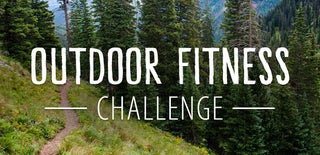Introduction: My Love Affair
I have been having an affair for years and my wife puts up with it. My love is a natural beauty, she is agile, dances like a feather on the water, has a cute round bottom and I love to take her out for an afternoon quickie. It is good to get your heart rate up for your health. Often I tie her up but it is just for her own protection. By now you must realize I am an old canoe paddler.
You can surf the ocean or even attach two together to freight a heavy load. With the shallow draft and maneuverability you can get into places other craft can't go. Jumping a log or paddling in kelp or Lilly pads are not a problem. Transporting lots of gear and people is possible with the ease of loading an open canoe. Moving a canoe sideways in flat water or a rapids is easy when you have developed the skills.
Step 1: Embrace the Ancient Culture of Canoes
Before written history the canoe has been a part of our ancestors culture but has been ignored for it's flashier newcomers to the boating world. The stand up paddle boards, kayaks, and sit on tops, get lots of attention. Sometimes we forget the remarkable things a canoe can do. For portability, versatility, and variability the canoe is remarkable. When it comes to light weight, canoes can rival the best. One of my canoes tips the scales at 24 pounds and can accommodate two adults. I have paddled a 250 pound canoe that was 25 foot with 10 paddlers.
Step 2: Get Close to Nature
Nothing compares to a canoe for nature observation. You can get into places quietly and animals react different when you are floating by without any noise and limited movement. I often use a stealth stroke where the paddle never splashes or leaves the water. When you keep both hands below the gunwale out of view your presence is not a disturbance. Enjoy that portage as it keeps out the casual traveler. Where else will you find a meat eating plant be entertained by an otter or have breakfast with the seals.
Step 3: Day to Learn and a Life Time to Master
One of my pleasures is the opportunity to spend a lifetime learning new paddling skills. Perhaps you will take it to a new level as you study obedience training for your canoe. Learning to do a one handed pry stroke, an axel, christiy, post or wedge will improve your canoe control.
To control the direction it is easiest to pivot the canoe by creating thrust at the ends then
power the canoe the desired direction. From the stern it is easier to pull or pry the back of the boat such that the bow or front of the canoe faces the desired direction. Then paddle forward.
For best control fore and aft as well as sideways, kneeling or sitting in a saddle are
better. Like a motor on a boat, the position of where the motor provides the thrust determines the direction the boat will move.
Either paddler can perform rudder strokes where the paddle is used to direct the moving
water to create a thrust. Many strokes are combined to subtly correct the boat’s path.
The “J” stroke is a combination stroke causing the canoe to move forward then the
paddle is twisted and held behind the canoe as a rudder to alter the canoes direction.
The hottest rage in paddling is the Stand Up Paddling. This is not a new idea paddlers
of canoes have been doing this before recorded time. The new thing is to make a craft that only works well with a stand up paddle. When doing it on a board the usual stance is both feet parallel but in a canoe I prefer a stance that allows you to use your lower body for a powerful long stroke. We learned with our legs apart and one foot forward it allows you to use those powerful legs for power. It also helped to have a good stroke that makes the boat go straight.
Step 4: Passing on the Paddle
I conducted a canoe training for a group of six 7th grade girls. We did the nomenclature, knots, carries, gear, launching, balance, pivot and power, forward strokes, braces, draws sweeps and all the basics. I am aware that in a normal class you can expect a good student to pick up 3 new skills. I showed them about 30.
We took a lunch break and I asked them how they felt it was going. The response was every thing was soooooooooo hard. Especially making the canoe go where you wanted it to. The girls wanted to swim in the cold lake. Their group leader said another hour of paddling and the reward would be a swim after the paddling lessons. I told them I really can not teach you how to paddle the best thing is to spend some hours just playing in the canoes. I told them I have no problem with them swimming out of the canoe. If they wanted to capsize them or stand in it I was fine with that.
The only requirement was they need to have a change of clothes and not hurt each other. We went back out on the water. In the next two hours they learned more about paddling than the detailed training I gave them in the morning. I was most impressed I showed them how to do a T rescue and get back in the canoe. They exhausted me just watching them. Without my asking they repeated the T rescue a dozen times. They laughed and screamed swimming up into the bubble and standing while paddling.
By the end of the training these 14 year old girls were well on their way to being real paddlers.

Participated in the
Outdoor Fitness Challenge













